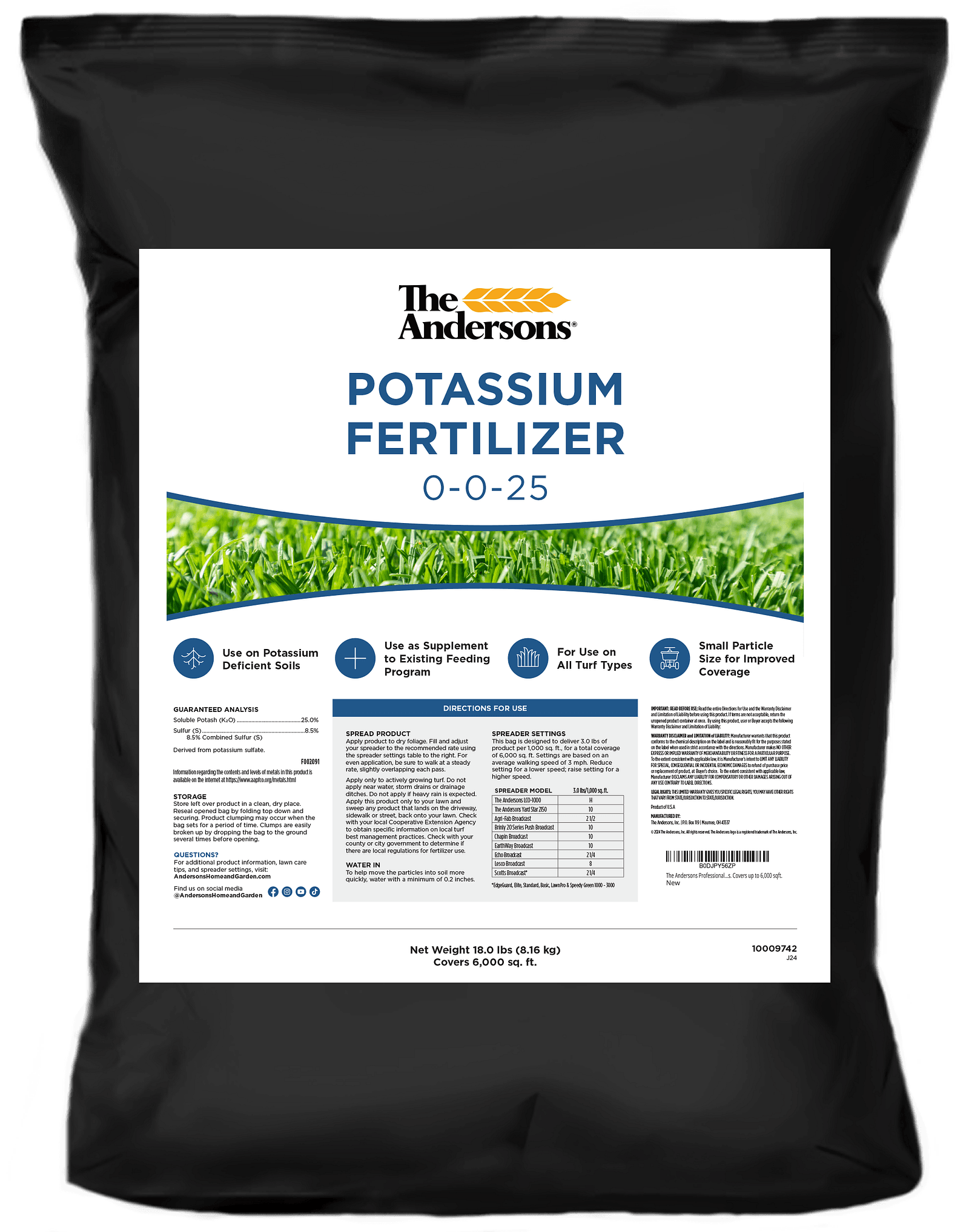Potassium Fertilizer 0-0-25
Lawn Fertilizer
- Ideal for lawns with potassium deficiencies
- Use as a supplement to your existing feeding program
- Can be used any time during the growing season
- Small particle size for complete and uniform coverage
- Reapply every 4-6 weeks if your soil has a potassium deficiency or if you have sandy soil
- Safe for all turf types
- Made in the USA
- Potassium Fertilizer 0-0-25 is available in pallet quantities - There are 77 bags per pallet
- Not for sale in CA
Overview
The Andersons Potassium Fertilizer 0-0-25 is a professional-grade fertilizer that is ideal for lawns suffering from potassium deficiencies. This high-quality fertilizer features a small particle size for complete and uniform coverage. Suitable for application at any time during the growing season, it ensures continuous growth and vitality. Safe for all turf types, The Andersons Potassium Fertilizer 0-0-25 fertilizer provides immediate feeding for your turf.
| Analysis | 0-0-25 |
| Package Sizes | 18 lbs |
| Coverage | Up to 6,000 sqft |
APPLYING POTSASSIUM FERTILIZER 0-0-25
- Apply product to dry foliage.
- Fill and adjust your spreader to the recommended rate using the spreader settings table.
- For even application, be sure to walk at a steady rate, slightly overlapping each pass.
- Do not apply if heavy rain is expected.
- Apply this product only to your lawn and sweep any product that lands on the driveway, sidewalk or street, back onto your lawn.
- To help move the particles into soil more quickly, water with a minimum of 0.2 inches.
PRO APPLICATION TIPS:
- Mow before applying
- Apply only to actively growing turf.
- Do not apply prior to heavy rainfall to avoid particles getting washed away
- Store left over product in a clean, dry place. Reseal opened bag by folding top down and securing.
The spreader settings for this product were established using standard equipment available from the spreader manufacturer at swath widths and speeds typically used within the industry. Many variables such as walking speed, terrain, particle size, density, and spreader condition can affect these settings. Spreader settings are intended as a guide and unit calibration should still be performed to ensure proper application rates. They are not intended to replace calibration. The Andersons recommends the use of broadcast spreader for its products.
Related Products











